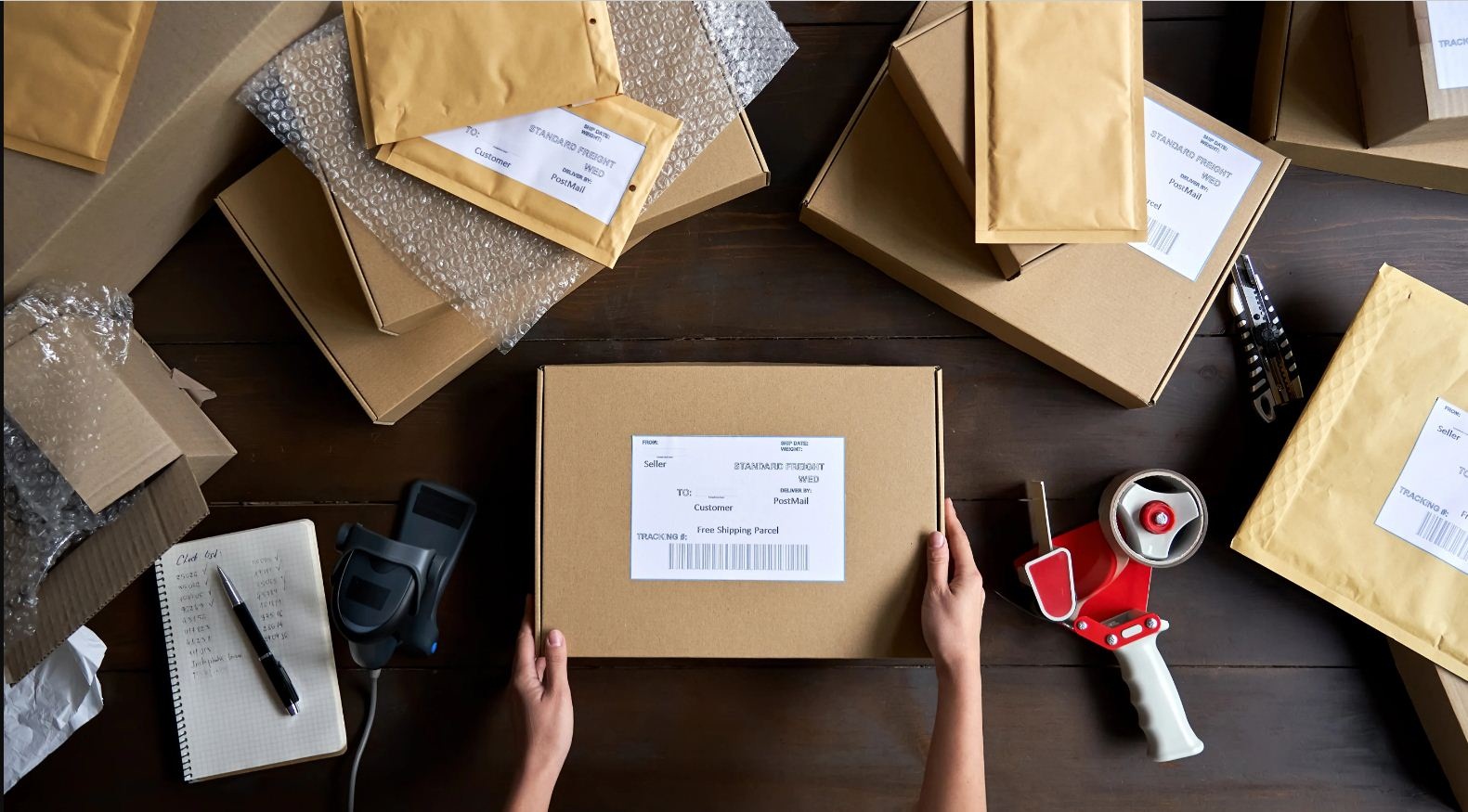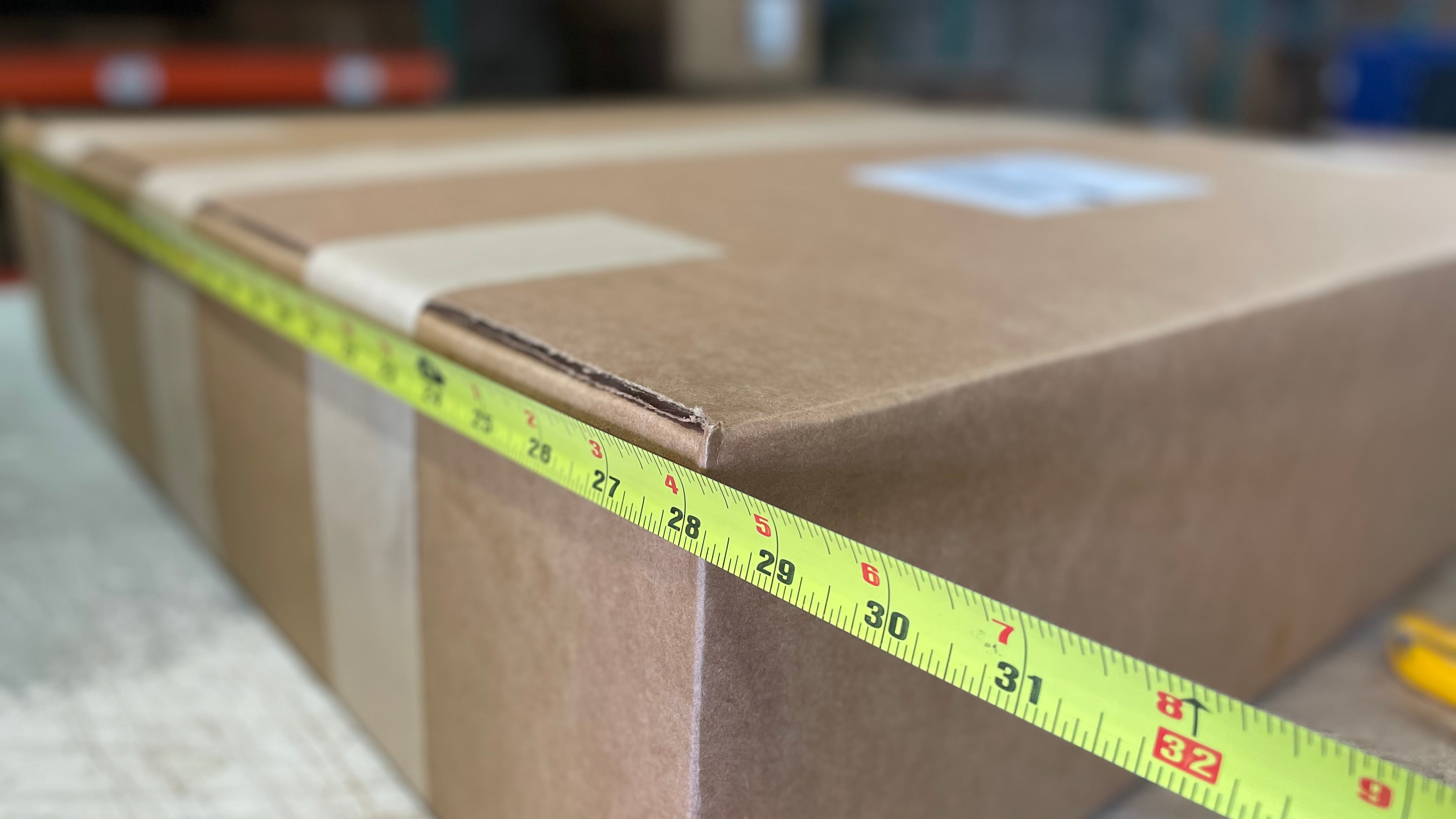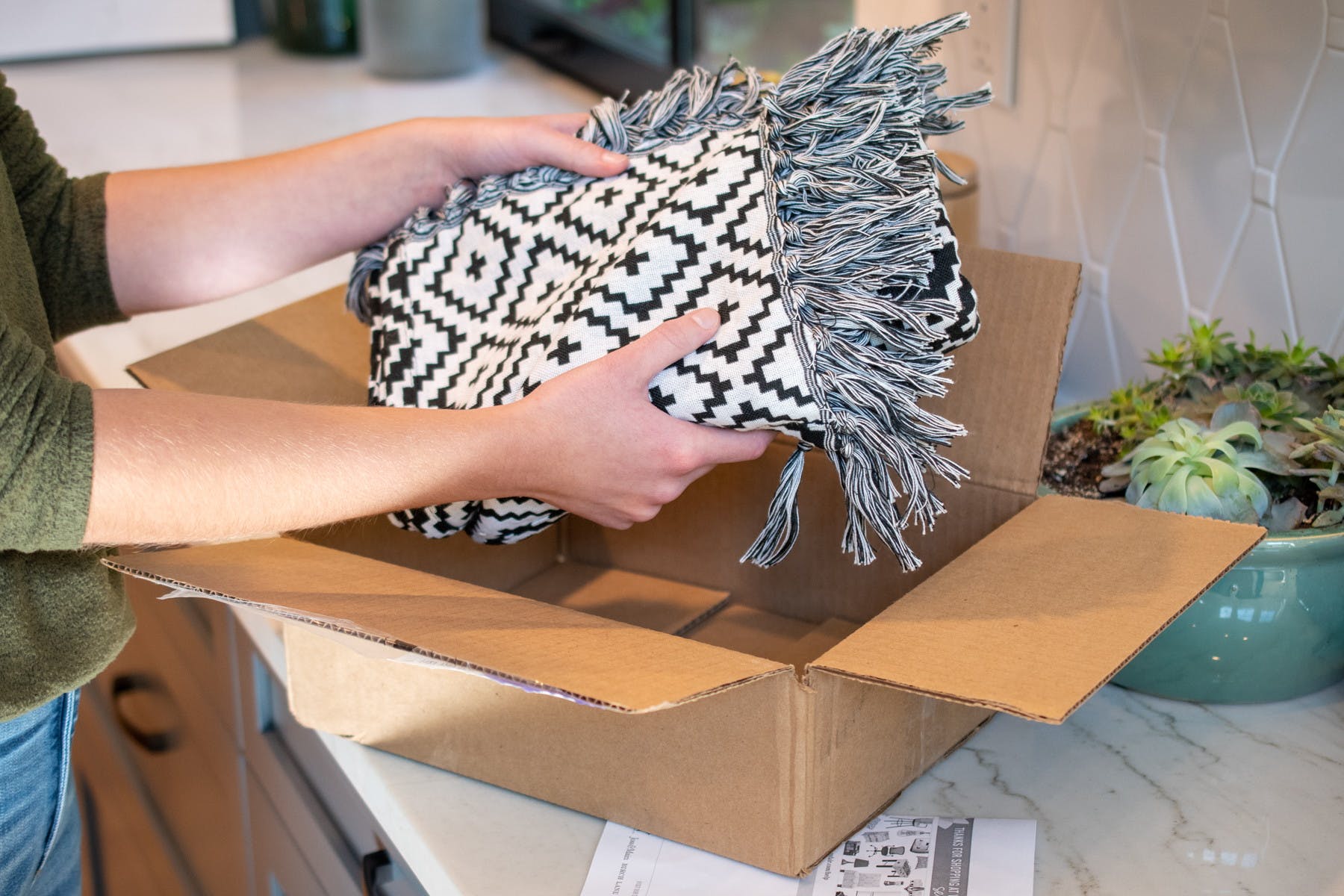

Articles
How To Ship Large Furniture
Modified: January 18, 2024
Looking for tips on how to ship large furniture? Learn the best techniques for shipping your furniture safely and efficiently.
(Many of the links in this article redirect to a specific reviewed product. Your purchase of these products through affiliate links helps to generate commission for Storables.com, at no extra cost. Learn more)
Introduction
Shipping large furniture can be a daunting task. From the delicate nature of some pieces to the sheer size and weight of others, it requires careful planning and preparation to ensure a safe and successful delivery. Whether you’re moving homes, sending a gift, or selling furniture online, following the right steps can make a world of difference in protecting your beloved items. In this article, we will provide a comprehensive guide on how to ship large furniture.
Before diving into the logistics of shipping furniture, it’s important to emphasize the significance of measuring and planning. Taking accurate measurements of your furniture will help you determine the best shipping method and ensure a seamless fit. Additionally, planning in advance allows you to set a timeline, budget for any additional supplies or services, and make necessary arrangements.
In the following sections, we will walk you through each step of the shipping process, offering valuable tips and guidelines to help you ship your large furniture with ease and confidence.
Key Takeaways:
- Proper planning, measuring, and disassembling large furniture are crucial steps to ensure safe and successful shipping. By securing loose parts, wrapping with protective materials, and choosing the right packaging, you can protect your cherished items during transit.
- Insuring your shipment and tracking its progress are essential for peace of mind. By following these comprehensive steps, you can navigate the shipping process with confidence and ensure the safe arrival of your large furniture at its destination.
Read more: How To Ship Furniture On Etsy
Step 1: Measure and Plan
The first step in shipping large furniture is to carefully measure and plan. This will help you determine the most suitable shipping method, ensure the furniture will fit through doorways and hallways at the pickup and delivery locations, and give you an idea of any additional supplies or services you may need.
Begin by measuring the dimensions of your furniture, including its height, width, and depth. Write down these measurements to reference later. Next, measure any oversized or irregular parts, such as attached headboards, arms, or legs. It’s essential to take accurate measurements to avoid any surprises when it comes time to ship.
Once you have the measurements, assess your furniture’s weight. Knowing the weight will help you determine the type of transportation and packaging materials needed to protect your items during transit.
Take note of any fragile or delicate components of your furniture, such as glass tops or intricate carvings. Consider how you will protect these vulnerable areas during shipping.
After gathering all the necessary measurements and assessing the fragility of your furniture, it’s time to plan the logistics of the shipment. Determine the pickup and delivery locations, including any potential obstacles such as stairs or narrow entryways. This information will help you select the appropriate shipping method and alert the shipping company to any potential challenges.
Consider your timeline and budget for shipping. If you have a strict deadline or specific budget, this will influence the shipping options you choose. It’s important to factor in any transit time, especially if you’re moving or need the furniture to arrive by a certain date.
By taking the time to measure and plan, you will have a clear understanding of your furniture’s dimensions, weight, fragility, and shipping requirements. With this information, you can move on to the next steps in preparing your furniture for shipping.
Step 2: Disassemble if Possible
If your large furniture is made up of multiple pieces or has removable parts, consider disassembling it before shipping. Disassembling furniture not only makes it easier to handle and transport, but also reduces the risk of damage during transit. Follow these guidelines to safely disassemble your furniture:
1. Refer to the manufacturer’s instructions: If available, consult the original assembly guide provided by the manufacturer. This will guide you through the proper disassembly process and ensure that you don’t miss any important steps.
2. Gather the necessary tools: Before starting the disassembly, gather the appropriate tools such as screwdrivers, Allen wrenches, or power tools. Having the right tools on hand will make the process smoother and prevent any unnecessary strain or damage.
3. Take photos or make notes: As you disassemble the furniture, document the process by taking photos or making detailed notes. This will serve as a handy reference when it comes time to reassemble the furniture at the destination.
4. Remove cushions and upholstery: If your furniture has removable cushions or upholstery, carefully remove them and set them aside. This will protect them from potential damage during shipping and make the furniture more compact.
5. Keep small parts together: Place all screws, bolts, and small hardware in a labeled bag or container. Keeping them together ensures that you won’t lose any essential pieces during transit.
6. Store disassembled parts securely: Once each piece of furniture is disassembled, wrap them individually with protective materials like bubble wrap or furniture blankets. Securely tape or tie the wrapped pieces to prevent any movement or scratching during transportation.
Remember, not all furniture can be easily disassembled. Some pieces may be too delicate or intricate to take apart, while others may require professional assistance. Use your best judgment and consider the complexity of the furniture before attempting the disassembly process.
Disassembling your furniture can save space, reduce the risk of damage, and make the overall shipping process more manageable. By following these steps, you’ll be well-prepared to move on to the next stage of shipping your large furniture.
Step 3: Secure Loose Parts
Once you’ve disassembled your large furniture, it’s essential to secure any loose parts to prevent them from getting damaged or lost during transit. This step is particularly important for items with detachable components, such as table legs, chair arms, or drawer knobs. Follow these guidelines to ensure the safe transportation of your furniture’s loose parts:
1. Bag and label small hardware: Place all screws, bolts, and other small hardware in a labeled bag or container. Attach the bag to the corresponding furniture piece or store it in a safe place. Clearly label the bag to avoid confusion during reassembly at the destination.
2. Wrap fragile parts: If your furniture has delicate or fragile parts, such as glass tops or decorative elements, take extra precautions to protect them. Wrap these parts with bubble wrap or foam padding and secure them in place with tape or plastic wrap. This added layer of protection will safeguard them against potential damage during transit.
3. Use zip ties or tape: For furniture items with loose or protruding parts, such as table leaves or chair backs, use zip ties or strong tape to secure them in place. This prevents them from shifting or falling off during transportation.
4. Fill empty spaces: Fill any empty spaces or gaps between furniture pieces with packing material, such as bubble wrap or packing peanuts. This helps to prevent movement and minimizes the risk of damage caused by rubbing or collision between the pieces.
5. Protect fragile surfaces: If your furniture has delicate surfaces or finishes that are prone to scratches or damage, apply furniture pads or bubble wrap to protect them. Secure the protective material in place with tape or plastic wrap.
By taking the time to secure loose parts, you can minimize the risk of damage and ensure that all components of your furniture arrive safely at their destination. Remember to keep track of all the secured parts and their corresponding furniture pieces to make the reassembly process easier.
With your furniture’s loose parts securely protected, you can move on to the next step of wrapping your large furniture in protective materials for additional safety during shipping.
Step 4: Wrap with Protective Materials
Wrapping your large furniture with protective materials is crucial to safeguard it from damage during shipping. Whether you’re moving furniture to a new home or sending it to a customer, proper wrapping provides an additional layer of protection. Follow these steps to wrap your furniture with protective materials:
1. Start with a clean surface: Before wrapping your furniture, ensure that it’s clean and free from any dust or debris. Wipe down the surfaces with a gentle cleaner or a dry cloth to remove any dirt or stains.
2. Begin with a base layer: Lay a furniture blanket or moving blanket on the floor, making sure it’s large enough to wrap around the entire piece. The blanket should provide adequate cushioning and protection for the furniture’s surfaces.
3. Wrap the furniture tightly: Place the furniture on top of the blanket and wrap it tightly, securing the blanket in place with packing tape or plastic wrap. Make sure that all corners and edges are well-covered and protected.
4. Pay attention to fragile areas: For furniture with delicate or vulnerable areas, such as glass or exposed wood, use additional protective materials. Wrap these areas with bubble wrap or foam padding, securing them in place with tape or plastic wrap.
5. Secure with additional layers: If necessary, add additional layers of furniture blankets or bubble wrap to provide extra cushioning and protection. Use packing tape or plastic wrap to hold the layers in place and prevent them from shifting during shipping.
6. Protect legs and other protruding parts: For furniture with legs or other protruding parts, wrap them individually with bubble wrap or foam padding. Secure the protective material in place with tape or plastic wrap, ensuring that they won’t get damaged or scratched during transit.
7. Wrap any loose or detachable parts separately: If your furniture has loose or detachable parts, such as cushions or removable shelves, wrap them individually with protective materials. Clearly label and secure them with tape or wrap to prevent them from getting lost or damaged.
By wrapping your large furniture with protective materials, you’re providing an extra layer of defense against bumps, scratches, and other potential damages. The next step is to choose the proper packaging to ensure the safe transportation of your furniture.
Read more: How To Store Shipping Supplies
Step 5: Use Proper Packaging
Choosing the right packaging materials is essential to ensure the safe transportation of your large furniture. Proper packaging provides added protection against bumps, jostling, and other potential hazards during shipping. Follow these guidelines to use the appropriate packaging for your furniture:
1. Select sturdy boxes or crates: If your furniture can be disassembled or is small enough to fit in a box, choose sturdy and appropriately sized boxes or crates. Opt for heavy-duty cardboard boxes or wooden crates designed for shipping large items. Ensure that the boxes are in good condition and can withstand the weight and dimensions of your furniture.
2. Reinforce the packaging: Use packing tape to reinforce the seams and edges of the boxes or crates. This prevents them from bursting or breaking during transit. For added strength, consider using an extra layer of tape around the corners and along the edges.
3. Add padding and cushioning: Place a layer of packing material, such as bubble wrap or packing peanuts, at the bottom of the box or crate to provide cushioning. This helps absorb shocks and protects your furniture from impact. Additionally, insert padding between the furniture and the walls of the packaging to prevent movement and reduce the risk of damage.
4. Securely fasten the furniture in the packaging: As you place the disassembled or wrapped furniture in the box or crate, ensure it is positioned securely and snugly. Fill any empty spaces with packing material to prevent shifting or movement during transit. This will help distribute the weight evenly and reduce the risk of damage caused by instability.
5. Label the packaging: Clearly label the packaging with your name, address, and contact information. This ensures that the package can be easily identified and delivered to the correct destination. Additionally, it’s helpful to include labels such as “Fragile,” “This Side Up,” or “Handle with Care” to alert the shipping carrier and handlers to exercise caution when handling the package.
6. Consider custom packaging: If your furniture requires specialized packaging due to its shape, fragility, or weight, consider using custom crates or packaging materials designed specifically for your item. Consult with a professional packaging service or shipping company to ensure the optimal packaging solution for your furniture.
Remember, the packaging you choose should be sturdy, secure, and provide adequate protection for your furniture during transit. By using the proper packaging materials and techniques, you can minimize the risk of damage and ensure a successful delivery. The next step is to label and mark fragile items for added care during handling and shipping.
When shipping large furniture, disassemble it if possible to reduce size and weight. Wrap each piece in protective materials and use sturdy boxes for shipping. Label each piece clearly for easy reassembly.
Step 6: Label and Mark Fragile Items
When shipping large furniture, it’s crucial to clearly label and mark any fragile items to ensure they receive extra care during handling and transportation. Fragile items are more susceptible to damage, so proper labeling and marking can help alert shipping carriers and handlers to exercise caution. Follow these guidelines to label and mark your fragile furniture items:
1. Use prominent and visible labels: Place labels that indicate “Fragile” or “Handle with Care” on multiple sides of the packaging. Use bright colors or bold fonts to make the labels easily noticeable. This ensures that anyone who comes into contact with the package knows to handle it with extra care.
2. Provide specific instructions: If there are specific instructions for handling a fragile item, such as “Do Not Stack” or “Keep Upright,” include these on the labels. This helps to further emphasize the importance of taking extra precautions when transporting the item.
3. Highlight delicate or vulnerable areas: Use a marker or labeling tape to specifically mark delicate or vulnerable areas of the furniture. For example, if your item has a glass top, mark it with arrows to indicate that it’s fragile. Pay attention to any areas prone to damage, such as decorative detailing or exposed edges, and make sure they are clearly marked.
4. Include contact information: In addition to marking the package as fragile, include your contact information on the labels. This way, if there are any questions or concerns during the shipping process, the carrier or recipient can easily reach out to you for assistance or clarification.
5. Communicate with the shipping carrier: When arranging the shipment, communicate with the shipping carrier about the fragile nature of the items. Provide them with any specific instructions or details about the furniture’s vulnerability, so they can handle it accordingly. This can ensure that the carriers are aware of the extra care needed for your shipment.
By properly labeling and marking fragile items, you’re helping to minimize the risk of damage during transit. This simple step can greatly impact the safe delivery of your furniture. The next step is to choose the right shipping option that suits your needs and budget.
Step 7: Choose the Right Shipping Option
Choosing the right shipping option is crucial when it comes to shipping large furniture. The right option ensures that your furniture is transported safely and efficiently, while also considering factors like cost and delivery time. Consider the following factors when selecting the right shipping option:
1. Size and weight: Evaluate the size and weight of your furniture to determine the appropriate shipping method. Large and heavy items may require freight shipping or a dedicated moving service, while smaller pieces can be shipped through parcel carriers.
2. Distance: Consider the distance the furniture needs to travel. For local moves or shorter distances, options like local movers or DIY transportation may be more cost-effective. However, for long-distance or international shipments, freight services or specialized furniture shipping companies may be more suitable.
3. Time frame: If you have a specific timeline for the delivery, consider time-sensitive shipping options. Expedited or express services can ensure faster delivery, but they often come with higher costs. Balancing your budget and delivery time frame is crucial when selecting the right shipping option.
4. Insurance coverage: Check the insurance coverage provided by the shipping carrier or consider purchasing additional insurance for valuable or delicate furniture. Insurance coverage protects your furniture against damage or loss during transit and provides peace of mind. Read the terms and conditions of the insurance policy to understand the coverage and any limitations.
5. Packaging requirements: Different shipping options may have specific packaging requirements. Ensure your furniture is properly packaged according to the carrier’s guidelines to avoid any delays or complications. Some carriers may provide packaging services or materials for an additional fee.
6. Cost: Determine your budget for shipping and compare the costs of different shipping options. Consider not only the base shipping rate but also any additional services or fees that may be involved. It’s important to balance the cost with the quality and reliability of the shipping service.
7. Reputation and reviews: Research the reputation and reviews of shipping carriers or furniture shipping companies. Look for companies with positive feedback and a track record of handling large furniture with care and professionalism. Online reviews and testimonials can provide valuable insights into the reliability and customer satisfaction of different shipping options.
By considering these factors, you can choose the right shipping option that matches your needs, budget, and timeline. The next step is to prepare for the pick-up or drop-off of your furniture.
Step 8: Prepare for Pick Up or Drop Off
Preparing for the pick-up or drop-off of your furniture is crucial to ensure a smooth and hassle-free shipping process. Whether you’re arranging for a shipping company to pick up your furniture or bringing it to a shipping location yourself, follow these steps to prepare for the process:
1. Confirm the details: Double-check the date, time, and location of the pick-up or drop-off. Ensure that you have all the necessary information and contact numbers of the shipping company or the recipient, if applicable. Clear any potential access issues or restrictions at the pick-up or drop-off location to avoid delays or complications.
2. Organize paperwork: Gather all relevant paperwork, including the shipping labels, tracking information, invoices, and proof of insurance. Have these documents prepared and easily accessible for the shipping company or recipient. If required, ensure that you have the necessary customs documentation for international shipments.
3. Prepare the furniture for transport: If the furniture is disassembled, wrapped, or packaged, ensure that everything is securely in place. Check the packaging and wrapping for any loose or damaged areas, and reinforce if necessary. Use packing tape to secure any loose ends or edges. Make sure that the furniture is labeled and marked appropriately, especially if there are fragile items or specific handling instructions.
4. Provide necessary assistance: If you’re arranging for a shipping company to pick up the furniture, be present or designate a responsible individual to oversee the process. Provide any necessary assistance or instructions to the shipping personnel, especially if there are specific loading or handling requirements for your furniture.
5. Inspect and document the condition: Before the furniture is loaded onto the shipping vehicle, conduct a thorough inspection of its condition. Take photos or videos of the furniture from different angles to document its existing condition. This documentation will serve as proof in case of any damage claims during transit.
6. Obtain shipping receipts and tracking information: Once the furniture is picked up or dropped off, obtain shipping receipts and tracking information from the shipping company. Keep these documents in a safe place for future reference and tracking purposes. Share the tracking information with the recipient, if applicable, so they can monitor the progress of the shipment.
7. Communicate with the recipient (if applicable): If you’re shipping the furniture to someone else, provide them with all necessary information, including the tracking number and estimated delivery date. Be available to address any questions or concerns they may have throughout the shipping process.
By following these steps, you can ensure that your furniture is well-prepared for pick-up or drop-off, and that the shipping process goes smoothly. The next step is to consider insuring your shipment for added peace of mind.
Read more: How To Ship A Bed Frame
Step 9: Insure Your Shipment
One of the important steps in shipping large furniture is to consider insuring your shipment. While you take every precaution to protect your furniture during transit, accidents can still happen. Having insurance coverage provides you with peace of mind and financial protection in case of any loss or damage. Follow these guidelines to insure your shipment:
1. Assess the value of your furniture: Determine the value of your furniture and decide on the appropriate insurance coverage. Consider the cost of replacement or repair, taking into account any sentimental or antique value your furniture may have. This will help you decide on the appropriate insurance coverage and coverage limits.
2. Consult with the shipping carrier: Inquire about the insurance options provided by the shipping carrier. Many carriers offer basic liability coverage, but it may not fully cover the value of your furniture. Ask about additional insurance options or third-party insurance providers they may recommend.
3. Understand the insurance coverage: Read the insurance policy carefully to understand the coverage provided, including any limitations, deductibles, or exclusions. Some policies may only cover specific types of damage or have limitations on certain items, such as antique furniture or glass surfaces.
4. Consider additional insurance: If the basic insurance coverage offered by the shipping carrier is not sufficient, consider purchasing additional insurance from a third-party provider. Shop around and compare quotes from different insurance companies to ensure you get the best coverage at a competitive price.
5. Document the condition of the furniture: Before shipping, document the condition of your furniture with photos or videos. This documentation will serve as evidence in case of any damage or loss during transit. Make sure to include close-ups of any fragile or valuable areas.
6. Retain all documentation: Keep copies of your insurance policy, shipping receipts, and any documentation related to the value of your furniture. This includes invoices, appraisals, or receipts for any repairs or restoration work that has been done on the furniture.
7. Follow the claims process: If you need to make a claim for damage or loss, follow the claims process outlined by your insurance provider. Provide all necessary documentation, including photos, receipts, and any other evidence of the condition and value of the furniture. Report the claim as soon as possible to initiate the process smoothly.
Having insurance coverage for your shipment provides you with added protection and peace of mind. It ensures that in the unfortunate event of damage or loss, you can recover the financial value of your furniture. The final step is to track your shipment to monitor its progress and ensure a successful delivery.
Step 10: Track Your Shipment
Tracking your shipment is a crucial step in shipping large furniture. It allows you to monitor the progress of your delivery, stay informed about any potential delays, and ensure a successful and timely arrival. Follow these guidelines to track your shipment:
1. Obtain tracking information: Collect the tracking number or reference number provided by the shipping carrier. This unique identifier allows you to track your shipment throughout its journey.
2. Visit the carrier’s website: Go to the shipping carrier’s website and locate the tracking section. Enter your tracking number in the designated field and initiate the tracking process.
3. Monitor the status: Once you’ve entered the tracking number, you’ll see the current status of your shipment. This may include details such as the shipping carrier, the date and time of pickup, and the estimated delivery date.
4. Check for updates: Regularly check for updates on the tracking website. The shipping carrier will provide real-time updates as the shipment moves through various checkpoints along its route. This helps you stay informed about the location and progress of your furniture.
5. Sign up for notifications: Many shipping carriers offer the option to sign up for email or text notifications. This allows you to receive immediate updates about any changes in the status of your shipment. It’s a convenient way to stay informed without having to manually check the tracking website.
6. Contact customer support if needed: If you have any concerns or questions about the tracking information or delivery status, don’t hesitate to reach out to the shipping carrier’s customer support. They can provide clarification and assistance based on the specific details of your shipment.
7. Prepare for delivery: Once the tracking indicates that your furniture is nearing its destination, make sure you’re prepared for delivery. Clear any obstructions or obstacles that may hinder the delivery personnel. Ensure that someone will be available to receive the shipment and sign for it, if necessary.
Tracking your shipment gives you peace of mind and allows you to anticipate the arrival of your furniture. It’s a valuable tool to ensure a smooth and successful shipping experience. By following these steps, you can stay informed and be proactive in addressing any issues that may arise along the way.
Now that you have completed all the necessary steps to ship your large furniture, you can look forward to the safe arrival of your cherished items at their destination. Remember to carefully unwrap and inspect your furniture upon delivery to confirm its condition. Happy shipping!
Conclusion
Shipping large furniture is a task that requires careful planning, organization, and attention to detail. By following the steps outlined in this comprehensive guide, you can ensure a safe and successful shipping experience for your beloved furniture pieces.
From measuring and planning to disassembling, securing loose parts, wrapping with protective materials, and choosing the right packaging, each step plays a crucial role in protecting your furniture during transit. Additionally, labeling and marking fragile items, selecting the appropriate shipping option, insuring your shipment, and tracking its progress all contribute to a smooth and worry-free shipping process.
Remember, while it’s important to consider the logistics, timing, and budget of shipping large furniture, it’s just as vital to prioritize the protection and care of your cherished items. Taking the time to properly prepare and package your furniture, as well as insuring it against any unfortunate incidents, provides peace of mind and reassurance.
Whether you’re moving, selling furniture online, or sending a gift, ensure that you follow these steps and make use of the right packaging materials, insurance coverage, and tracking options to guarantee a successful delivery.
By combining SEO optimization with engaging content, this article provides a comprehensive guide for anyone looking to ship large furniture. Remember to adapt the information to suit your specific needs and carefully review any regulations or requirements from the shipping carriers you work with.
Shipping large furniture doesn’t have to be a daunting task. With proper planning, preparation, and execution, you can ensure that your furniture arrives at its destination safely and in optimal condition. So, embrace the process, take the necessary steps, and enjoy the satisfaction of a successful furniture shipment!
Frequently Asked Questions about How To Ship Large Furniture
Was this page helpful?
At Storables.com, we guarantee accurate and reliable information. Our content, validated by Expert Board Contributors, is crafted following stringent Editorial Policies. We're committed to providing you with well-researched, expert-backed insights for all your informational needs.














0 thoughts on “How To Ship Large Furniture”